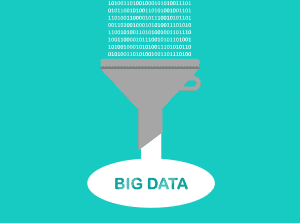 Click to learn more about author Gilad David Maayan.
Click to learn more about author Gilad David Maayan.
Big Data is a term used to describe large volumes of data in disparate formats that streams into various organizational systems at high-speed. This data requires the use of special tools to analyze it and derive insights from it that can give businesses a competitive edge.
Stats show that 53 percent of companies now operate a Big Data Analytics environment, and it’s hard to downplay the role that Open Source software has played in the increased adoption of Big Data Analytics. Open Source software, which is freely available and modifiable, is widely used by modern software development teams.
Apache Hadoop is one of the most important frameworks that has catered the processing of Big Data across clusters of computers using straightforward programming models. Hadoop is completely Open Source, having emerged as a result of the influence of two important Google research papers; one on the Google File System and the other on MapReduce, the latter which discusses simplified data processing on large clusters of computers.
Open Source and Big Data are a natural fit because Open Source projects are reliable and stable. Furthermore, the quality of Open Source projects increases as each project attracts more users, leading to virtuous cycle of continuously improving frameworks, tools, and libraries. The fact is that using Open Source tools and components for Big Data Analytics is a smart decision for any business looking to analyze Big Data. The rest of this article highlights five relevant and high-quality Open Source Big Data projects and tools. But first, a word on Open Source security.
Open Source Security
Open Source security is an important and overlooked aspect of using Open Source technologies. The level of due diligence performed by enterprises on the Open Source components they use is surprisingly often lacking. Open Source security is weak when there is no policy in place, no supply chain management for code, and no tools used for Open Source security vulnerability scanning and removal. See this resource by WhiteSource on the importance on Open Source security.
Big Data is area in which Open Source security plays a huge role. After all, such large volumes of data will likely contain sensitive information that needs to be protected. Big Data is, by its very nature, particularly vulnerable to security issues with any tools and frameworks used to analyze it.
Five Open Source Big Data Projects
- Apache Spark
Apache Spark is an Open Source framework for Big Data processing that offers some enhancements over Hadoop, such as faster processing. Spark covers an extensive range of workloads, including batch, interactive, iterative, and streaming. Spark’s real-time data processing capability is a big draw: it can process millions of events per second from sources such as Facebook and Twitter.
Spark is also very user-friendly, and it comes with APIs for Scala, Java, Python, and Spark SQL. Since it’s a hybrid processing framework, you can use Spark to process both batch data and streaming data.
- Apache Beam
Apache Beam is an Open Source programming model that helps define and execute both batch and streaming data processing pipelines. Beam lets you create a single, portable data pipeline that you can use with many different frameworks as needed. Beam delivers flexibility and agility for Big Data processing workloads.
Ease of use and developer-friendly abstractions for Big Data processing are Beam’s main perks.
- TensorFlow
TensorFlow is an Open Source library that helps build machine learning models. The Tensorflow project is very well-documented, and there are some excellent online tutorials for getting started with it.
An exciting potential use case for TensorFlow with Big Data is an improvement in the abilities of virtual agents to accurately answer customer queries. Machine Learning models can analyze customer interactions in real-time and help virtual agents better answer questions.
- MongoDB
MongoDB is an Open Source NOSQL database program. One of MongoDB’s main advantages in terms of Big Data is how it facilitates the storage of large volumes of unstructured data. Unstructured data, such as customer preferences, location data, Facebook likes, etc form a huge part of Big Data.
MongoDB is also excellent at handling real-time Data Analytics, which is becoming an increasingly important task with Big Data.
- Lumify
Lumify is an Open Source Big Data analysis and visualization platform. What Lumify excels at is accelerating the derivation of insights from large stores of data by visually linking data points related to a specific investigation. Lumify sits on top of underlying Big Data ecosystems and conveniently, it is accessible via web browser. You can explore relationships between the data via 2D and 3D graph visualizations, and the platform works on AWS (Amazon Web Server) environments.
Wrap Up
The Open Source model, with its decentralized approach and encouragement of collaboration, proves very useful for Big Data Analytics jobs. Analysts and developers can make use of some excellent high-quality Open Source tools, such as those mentioned above, to process and get valuable insights from big data. It’s vital, however, to prioritize Open Source security when using any Open Source tool or framework.
Photo Credit: Pixabay
